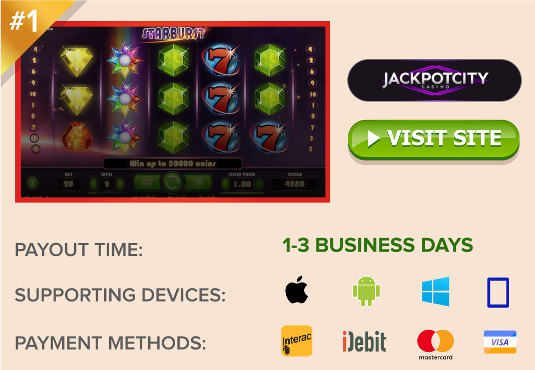Modern Gaming: Classic Blackjack Rules
The basic rules of blackjack as it’s played today throughout Canada’s physical and online casinos.
In its original form – predating the “Blackjack” name – the rules were quite different. Throughout history, fundamental shifts took place, most often associated with its spread across different regions. The United States, for instance, chose to impose a special bonus for a hand conceived of a Black Jack and the Ace of Spades. Even that rule was swiftly abolished, but the name caught on so quick, casinos chose to keep it.

Now days, the basic rules of blackjack do not waver. There may be subtle differences from one table to the next, like the number of decks in use, which hands a player can double on, or how many splits are allowed, but the objective remains the same.
Classic Rules of Blackjack
The game can be played with anywhere from 1 to 8 decks of cards. It requires a single dealer to facilitate the game, and 1 or more players to compete against them. The max number of players depends on the size of the casino’s tables, usually accommodating up to 5, 6 or 7 players.
The following diagram will help you get a better understanding of the explanations to come, so refer back to it as needed.

Object of Blackjack
The object of the game is quite simple. The dealer and player(s) will receive 2 cards each. The value of the two cards are combined to achieve a total. The goal is to achieve a higher total than that of the dealer, without exceeding 21 (bust). No matter how many players are at the table, each competes only with the dealer, not their fellow players.
Before we get into actual gameplay, there’s a few quick topics we need to cover first.
Card Values
Card ranks are very basic. Only the Ace has a unique value, capable of adding 1 or 11 to the total. Its value is dependent on the current total. If the Ace can be counted as 11 without busting, it will be. If the total value reaches or exceeds 11, the Ace will decrease to a 1.
Card values are as follows:
- Ace =1 or 11
- Face Card = 10
- 2-10 = Numerical equivalent
Busting
We talked a bit about this, but to a beginner, it should be a topic of great import. To bust is to receive a hand total of more than 21. For example, if a player is dealt 3+10, takes a hit, and is given a 9, the total is 22 – a bust.
It doesn’t take a mathematician to deduce why 21 is the magic number. You can’t possibly bust on your first two cards, as 21 is the highest natural hand you can receive.
When a player busts, the dealer automatically wins. When the dealer busts, the active players (those who did not already bust) automatically win.
Hard & Soft Hands
This section refers to whether a hand has an Ace that’s being counted as 11. This is what we call a Soft Hand. For instance, a hand of A+5 is a Soft 16. It is soft because it is safe. If you hit it, you cannot bust. A hand of A+5+9 is a hard total of 15. The Ace counts as 1, and if hit, a 7 or higher will bust it.
Every blackjack has a side rule that applies to the dealer. He/She will either be required to Hit or Stand on a Soft 17. This rule will be displayed directly on the table, as seen in the blackjack diagram above. The table will usually depict one of these phrases:
Dealer draws to 16 and stands on all 17s.
-or-
Dealer must hit Soft 17.
Table Limits
Pay close attention to the table limits before you sit down. The limits are displayed as a range of bet values, such as $10-$1,000. This means the lowest chip value you can bet is $10, and the highest $1,000. Any amount in between is also acceptable.
Table limits can vary greatly from one casino to the next. In land-based casinos, $10-$1,000 and $25-$2,500 are not uncommon. VIP rooms may go as high as $100-$10,000, if not more. Online casinos are better known for offering the lowest table limits, often starting at $1-$100.
Player’s Rules
Blackjack players are given a wide range of options. The choices they make will depend largely on their circumstances with each new hand. In the following section, you’ll learn all about the player’s ability to Hit, Stand, Double, Split, Surrender or Take Insurance.
Hit or Stand?
Hit: To take an additional card.
Stand: To stick with the current total, passing play to the next player or dealer.
The biggest difference between the players and the dealer is that players always have a choice – hit or stand? Although illogical, a player could stand on 2+3 (5), or hit 10+9 (19). There are no restrictions aside from stopping on a total of 21.
The dealer, on the other hand, must follow very strict house rules, making no decisions own his/her own. See Dealer Rules below.
Double Down
To Double Down, (aka Double) is to double the size of your bet (place a second amount of chips next to the first bet) and take a single Hit. The player agrees to Stand on the total before seeing the extra card.
There are two sets of rules that may apply to Doubling. One states that a player may double down on any two-card total. The other states players may only double down on two-card totals of 9, 10 or 11 (i.e. hands that cannot bust, and have potential to total 20 or 21). Be sure to see which rule is in play before placing your first bet.
Splitting Pairs
When a player is dealt an exact pair (5+5, 9+9, K+K, etc.), they have the option to Split those cards into two separate hands. To do so, the player must place a second wager, equal tot he first, next to his/her original bet. The dealer will then split the two cards apart, setting one bet next to each. Then a second card is dealt to each hand to make two complete hands.
The dealer will indicate which hand the player will settle first (hit, stand, double, or split). When that hand is finalized, the second hand is played out in the same fashion.
Splitting is usually restricted to no more than 4 hands per game. Some casinos will also prohibit splitting Aces, or, if splitting Aces is allowed, you might not be permitted to Hit the totals of the new hands. Again, be sure to check the rules for clarification, or ask the dealer if you’re not sure.
Taking Insurance
Insurance is an optional bet that is offered when the dealer is showing an Ace. In such circumstances, the odds of the dealer having blackjack increases from 7.7% (1 in 13) with any 10 showing, to 31% (4 in 13) with an Ace showing. That’s still less than a 1 in 3 chance, making the Insurance bet a bad choice, but that’s besides the point…
When taking insurance, the player wagers an amount equal to half their original bet on the Insurance line in front of their player station. If the dealer has blackjack, the player wins a payout of 2 to 1 on the insurance bet, but loses the original bet. End result – the player breaks even. If the dealer does not have blackjack, the insurance bet is lost and the hand carries on as usual.
Early / Late Surrender
Some classic blackjack rules will give players the option to Surrender, or forfeit a hand. Doing so earns the player back half of their wager, surrendering the other half to the dealer. An Early Surrender rule allows players to surrender their hand only before taking any additional cards. When Late Surrender is applied, the player can surrender their hand at anytime before standing or busting.
Dealer’s Rules
The dealer does not have to make any decisions in the game. All moves are predetermined by a strict set of house rules. The total of the dealer’s hand always determines whether to hit or stand. The dealer is not permitted to double or split.
Standard rules require the dealer to hit any total of 16 or below, and stand on any total of 17 or above. The only exception is if there is a ‘Soft 17‘ rule in play, in which case the dealer must hit a Soft 17, but stand on a Hard 17.
Win, Lose or Push
After all you’ve learned up to this point, the bulk of this section should be self-explanatory. Once all hands are played out, the following results may occur. If…
- …the player busts, the dealer wins.
- …the player stands and the dealer goes on to bust, the player wins even money on all bets.
- …neither bust, and the player’s total is higher than the dealer’s, the player wins an amount equal to his bet.
- …neither bust, and the dealer’s total is higher than the player’s, all bets are lost.
- …the player and dealer end with the same total, it’s a Push (tie). The bet is returned to the player; no win or loss.
Natural Blackjack
A player wins with a natural blackjack when he/she is dealt a two-card total of 21. This requires an Ace and any 10-value card. When a player is dealt a natural blackjack, a bonus payout is awarded. That payout should be 3-to-2, but could also be 6-to-5, or 7-to-5.
Be careful when choosing a blackjack table, as anything less than a 3-to-2 payout is considered a very raw deal!
I have seen it as low as 1-to-1 (even money), but only in special circumstances where the rules of the blackjack variant were so player-friendly, this payout had to be adjusted to compensate.
More Information…
There’s so much more to be learned about the game of blackjack. Continue your education with the following links:
- Complete Blackjack History
- Blackjack Side Bets
- Basic Blackjack Strategies
- Crash Course in Card Counting
- Blackjack Pros (from Canada and Beyond)
- Blackjack Books & Other Resources
 Jackpotcity.com is our editorial pick for your gaming needs. Currently offering an entire suite of casino games, as well as a wide range of Canadian deposit options, JackPotCity truly offers world-class gaming.
Jackpotcity.com is our editorial pick for your gaming needs. Currently offering an entire suite of casino games, as well as a wide range of Canadian deposit options, JackPotCity truly offers world-class gaming.





